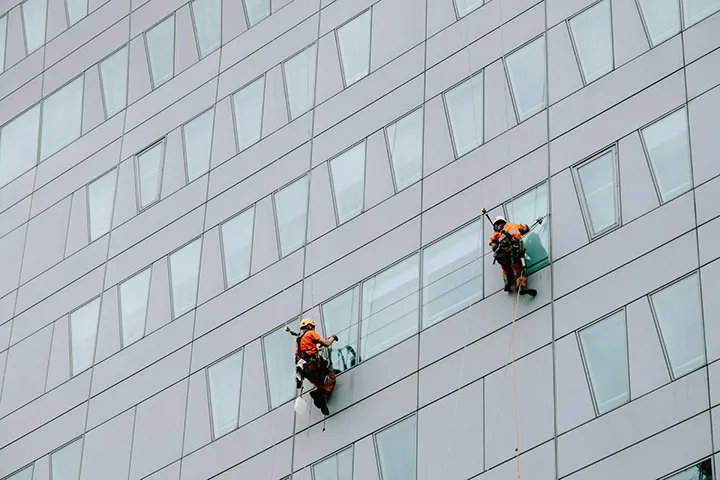In the dynamic landscape of Ontario workplaces, the demand for skilled labor often involves tasks
performed at elevated heights. Whether it’s construction, maintenance, or repairs, working at heights is
a fundamental aspect of various industries. However, with great elevation comes great responsibility.
This blog post aims to explore the nuances of working at heights in Ontario workplaces, with a particular
focus on critical elements such as fall arrest systems, harness usage, and the regulatory framework
governing these practices.
Understanding the Inherent Risks:
Working at heights introduces inherent risks that necessitate a vigilant approach to safety. Falls from
elevated surfaces remain one of the leading causes of workplace injuries and fatalities. In Ontario,
where industries thrive and infrastructure development is ongoing, acknowledging these risks is the first
step towards implementing effective safety measures.
The Crucial Role of Fall Arrest Systems:
When it comes to safeguarding workers at heights, fall arrest systems emerge as indispensable tools.
These systems are meticulously designed to minimize the impact of a fall, acting as a safety net for
workers engaged in tasks at elevated levels. In Ontario workplaces, the deployment of robust fall arrest
systems isn’t just a safety best practice; it’s a legal requirement.
Fall arrest systems encompass a range of equipment, including lifelines, lanyards, and anchor points.
These components work in tandem to arrest a fall and reduce the potential for injury. Employers bear
the responsibility of selecting, installing, and maintaining these systems to ensure they meet or exceed
safety standards.
Harnessing Safety: The Key to Fall Arrest Systems:
At the core of any effective fall arrest system lies the proper utilization of harnesses. Harnesses aren’t
just pieces of equipment; they are lifelines literally and figuratively. Workers must be adequately trained
to wear harnesses correctly, ensuring a snug fit that evenly distributes impact forces across the body.
Harnesses come in various designs, each catering to specific work scenarios. Full-body harnesses, for
instance, provide comprehensive support and are suitable for a wide range of applications. Regular
inspections and meticulous maintenance of harnesses are indispensable to guarantee their efficacy
during a fall event.
Navigating Ontario’s Regulatory Landscape:
The commitment to height safety in Ontario is not merely a matter of choice; it’s a legal imperative. The
Occupational Health and Safety Act (OHSA) serves as the cornerstone of occupational safety regulations
in the province. The Act, along with its associated regulations, outlines the legal framework governing
safety practices in Ontario workplaces.
A significant component of this regulatory framework is the Working at Heights Training Standard,
introduced by the Ministry of Labour, Training and Skills Development. This standard mandates that
workers engaged in tasks at heights complete an approved training program. Employers, in turn, are
responsible for providing the necessary equipment, training, and supervision to ensure compliance with
these regulations.
The Working at Heights Training Program covers a spectrum of essential topics, including hazard
identification, ladder safety, and the proper use of fall protection equipment. It is incumbent upon both
employers and workers to actively engage with these training programs, fostering a culture of safety
that permeates every level of the organization.
Best Practices for Working at Heights
Comprehensive Risk Assessment:
Before any work at heights begins, a thorough risk assessment should be conducted. This includes
identifying potential hazards, evaluating the stability of work surfaces, and determining the most
suitable fall protection measures.
Investing in Quality Equipment:
The efficacy of fall arrest systems depends on the quality of the equipment. Employers should invest in
high-quality lifelines, lanyards, harnesses, and anchor points, ensuring they comply with relevant safety
standards.
Training and Certification Programs:
Workers must undergo comprehensive training on working at heights, including the proper use of fall
protection equipment. Certification programs, such as the Working at Heights Training Standard,
provide a structured curriculum to instill the necessary knowledge and skills.
Regular Equipment Inspection and Maintenance:
Routine inspections of fall protection equipment are crucial. Employers should establish a robust
inspection schedule, checking for signs of wear and tear, ensuring that all components are in working
order, and promptly replacing any damaged equipment.
Emergency Response Planning:
Despite meticulous safety measures, emergencies can still occur. Employers should have a well-defined
emergency response plan in place, outlining procedures for rescue and medical assistance in the event
of a fall.
In the intricate tapestry of Ontario workplaces, working at heights stands as a pivotal but potentially
perilous endeavor. However, armed with the right knowledge, training, and adherence to regulatory
standards, the risks associated with elevated tasks can be significantly mitigated.
Employers play a pivotal role in fostering a culture of safety, where the well-being of workers takes
precedence over all else. As Ontario continues to evolve industrially, the commitment to height safety
must remain unwavering. By embracing best practices, staying informed about regulatory requirements,
and investing in the latest safety technologies, workplaces can transform the phrase “working at
heights” from a potential hazard to a symbol of responsible progress and an unwavering commitment to
the health and safety of all workers.
Looking for more information or have questions? If so, contact us and we would be more than happy to
arrange a phone call to discuss further.
